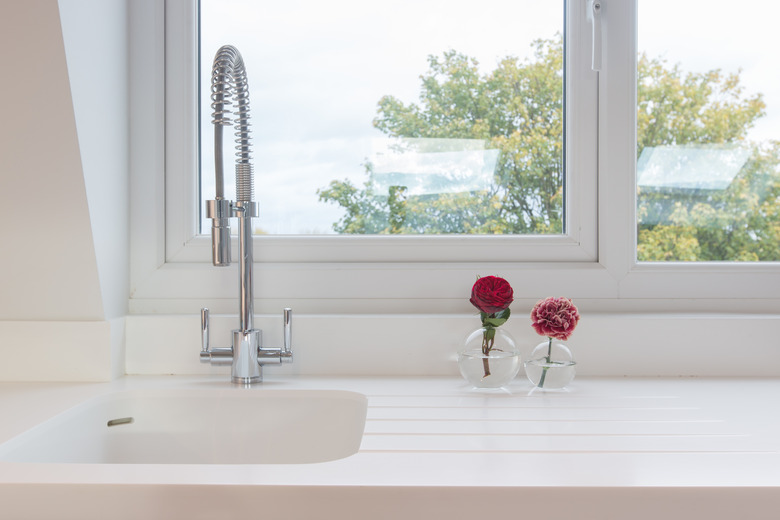Fireclay Vs. Cast Iron Sinks
In many homes, the kitchen is one of the main areas where family members gather. And within the kitchen, the sink is, at the very least, the spot that gets the most use. Two classic sink choices, fireclay vs cast iron, have been around for generations and have undergone a resurgence in popularity in recent years. Each has distinct characteristics, as well as advantages and drawbacks worth considering.
Cast Iron Basics
Cast Iron Basics
A cast iron sink begins with the casting of the iron. That iron base is then encased in durable enamel that comes in a variety of colors. Cast iron sink users appreciate the fact that the enamel coating won't stain the way acrylic does.
Kohler notes that one advantage of an enameled cast iron sink is that it is sturdy enough to withstand generations of heavy use. Cast iron and will even hold up when structural damage affects other parts of the kitchen. A cast iron farmhouse sink can also give a retro look to modern kitchens.
Fireclay Ceramic Basics
Fireclay Ceramic Basics
As the name implies, fireclay is a clay-based material that is fired in a kiln at very high temperatures. Fireclay is a type of ceramic; however, the firing process fuses the glaze to the clay and vastly improves the strength and integrity of the material. Fireclay sinks are extremely versatile, since the clay can be poured and shaped in any configuration, including the incorporation of artistic embellishments. For many homeowners, fireclay is a luxury that is more affordable than other materials.
Cast Iron Drawbacks
Cast Iron Drawbacks
The biggest drawbacks of cast iron are immediately apparent: cost and installation issues. Cast iron sinks are among the most expensive sinks on the market today, and may not fit into many kitchen renovation budgets. If budget is no concern, the biggest hurdle may be the installation.
Because cast iron sinks are so heavy, they can be difficult to move and place into position; additional sink under-mounting may be needed to support the weight of cast iron. A heavily used cast iron sink may also develop chips in the enamel; if these chips go down to the bare iron, that iron can rust.
Fireclay Ceramic Drawbacks
Fireclay Ceramic Drawbacks
Fireclay is a particularly strong ceramic, but it still suffers some of the same drawbacks that other ceramics do, although perhaps to a lesser extent. Even with a greater impact resistance that regular ceramic, fireclay can chip or scratch upon impact and may pick up some stains over the years. Water staining can occur on some designs, although users can prevent this by wiping down the sink after use.
Fireclay Versus Cast Iron Sink
Fireclay Versus Cast Iron Sink
If quality is your main concern, you can't go wrong with either cast iron or fireclay; both are attractive materials that are built to last. Cast iron fans love the rustic character these sinks lend to a kitchen, as well as the durability of cast iron.
For many, the choice between the two may simply come down to cost. Since cast iron is usually more expensive than fireclay, the decision to buy a fireclay sink may be easy. Consult a home remodeling expert for advice on choosing the material that is best for your budget and decor.
